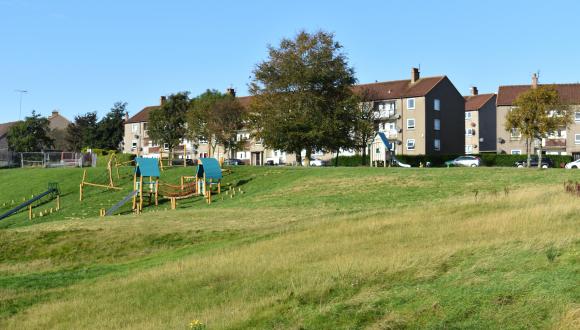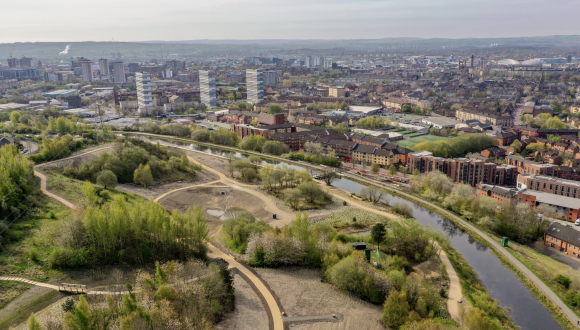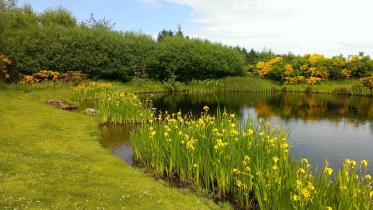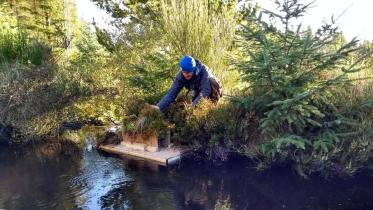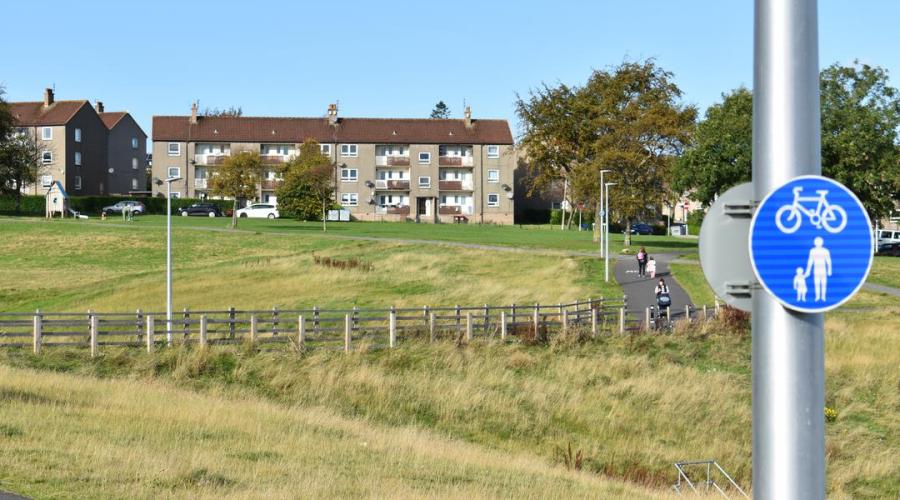
Green infrastructure and the cycling revolution
2 September 2020
Early on in the Covid-19 crisis cycling enjoyed a global boom. The ‘stay local’ message, and restrictions on travel, gradually tempted many people back onto their bikes. The number of cars on the road was hugely reduced and cycling felt safe. It also felt enjoyable, and several months on it shows no signs of being any less popular.
What might have surprised some is that Scotland heartily embraced this cycling revolution. True, this may be the nation that gave Chris Hoy and Robert Millar to the cycling world, but despite these elite athletes, ours hasn’t been a country associated with high levels of cycling.
Scotland is often linked with tight roads and hilly conditions. But good green infrastructure and the creation of dedicated active travel routes can tackle some of the issues which hinder mass participation cycling.
There are many cities around the world which love cycling. Famously Amsterdam catches many headlines, staying in the Netherlands but further north Groningen boasts 60% of all journeys are made by bicycle, and Copenhagen is another example of a cycling-friendly conurbation. They prosper as cycling havens in a challenging modern world where our cities get bigger and moving around quickly is highly-prized.
Amsterdam has a population in the region of 860,000. Copenhagen, the Danish capital, is home to around 1.3m people. That’s a lot of compact urban travel to accommodate.
At 598,000 and 530,000 respectively both Glasgow and Edinburgh are sizable cities too. Neither is known as flat, and neither can lay claim to the historic and popular cycling history of either the Dutch or Danish cities.
So just how has cycling flourished in Scotland?
One of the key movers has been Sustrans, which promotes a network of Scottish cycling and walking routes. They advise on projects which value safe, attractive and healthier pedal and pedestrian travel.
Recently they teamed up with Glasgow City Council to push the new South City Way. It’s set to be an excellent example of how an ambitious urban vision can transform a city’s cycling experience. The widely accepted view is that if you segregate cycling and walking routes from the traffic you make cyclists, new and experienced, feel safer. Negative perceptions around safety are a huge factor in preventing greater numbers of people taking to their bikes.
The visible reduction in car traffic during the initial stage of the coronavirus outbreak tempted many new cyclists out. The South City Way will build on this by creating a safe active travel route over the 3km route between Queen’s Park and the busy Glasgow city centre. In a nutshell, providing safe, dedicated infrastructure is key.
This bold step mirrors an international trend regarding cycling’s popularity.
Figures recently published in The Financial Times suggested that during the pandemic sales of bikes online in France, shot up by over 300%. The German government has elected to devote around €990 million through the national climate protection fund to improve cycling infrastructure.
Such was the global cycling revolution as the pandemic gripped there was soon a shortage of bikes. Bike shops were putting the ‘sold out’ signs up within days of getting new deliveries. Bike manufactures were swamped. The latter faced the double whammy of observing social distancing in their factories whilst trying to meet extraordinary worldwide demand.
Getting your hands on a bike might be a challenge for a while yet. Stocks of new bikes disappear in what seems like a blink of an eye. Even picking up a second-hand bike is nigh on impossible. There is currently an element of ‘make do and mend’ in the cycling world. Neglected and languishing old bikes have been welcomed back, hauled out of retirement from the shed, garage and the cupboard under the stairs to be pressed back into action; cycle maintenance is enjoying a lofty new status.
With concerns about public transport, the creation of dedicated cycling lanes, road closures in our big cities, and (for a while at any rate) fewer cars on the road, more people are thinking about cycling as a reliable method of transport. It fits beautifully with climate change goals for a greener, healthier society. What’s more there is increasing evidence that staying healthy and active, is excellent both for physical health as well as mental well-being. Good Green infrastructure supports these aspirations.
With its emphasis on promoting active travel green infrastructure projects have the potential to contribute significantly to new look cities. Our green infrastructure projects in Clydebank and South clearly display active travel routes. They are safe, green, popular and fun.
Urban cycling for commuting and leisure appears here to stay. Making it as safe and hassle-free as possible is a green infrastructure trump card.
